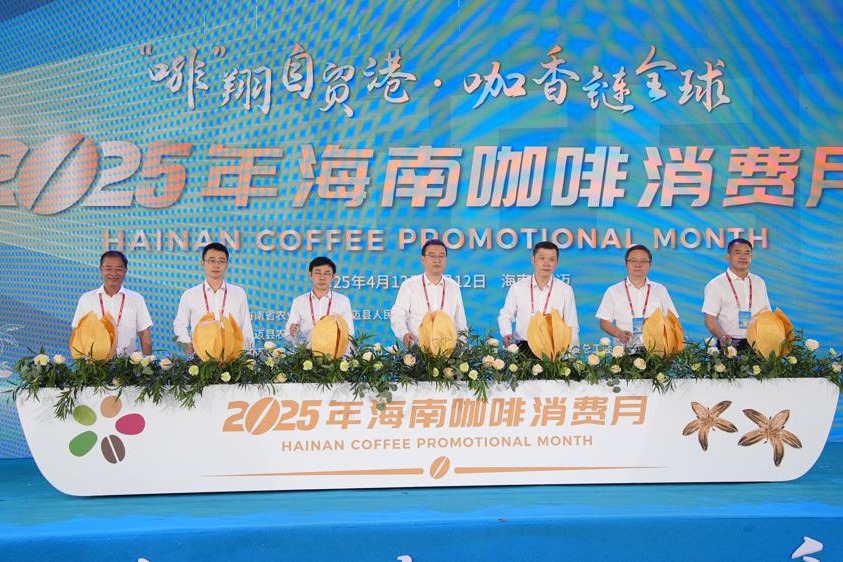Despite changes, China's growth stays steady


Economic data suggest the global economy seems to be recovering. Since the second quarter of last year, the COVID-19 pandemic has resulted in sharp declines in world GDP growth. In the second quarter of this year, GDP growth rates of major economies all rose rapidly. Although with resurgent COVID-19 outbreaks and a high comparison base effect, GDP growth rates of major economies still fell back in the third quarter.
Given the continuous decline in unemployment rates, and with the economic recovery of advanced economies likely to continue, there is little sign of the world slipping into a recession or a depression.
The global economy lacks vitality, though it is still recovering. Despite some countries having abandoned contagion prevention and quarantine measures, their vaccination programs have progressed rapidly. However, this does not mean that the pandemic will no longer affect the economies of these countries. The pandemic has reshaped people's behavioral patterns and changed consumption and employment activities.
People used to worry about jobless growth in developed economies, and now "growthless employment" may occur in the future. That is, even with full employment, the economy will not have rapid growth, and will be on a low-growth level for a long time.
The overall long-term growth rates of developed economies have become sluggish-at about 1 percent-since the start of the century, especially after the global financial crisis of 2008-09.
The pandemic will further affect long-term economic growth rates of developed economies while emerging economies will also move from rapid economic growth to relatively slower growth.
Since August, the Chinese economy has performed well in two aspects. One is the rapid growth in exports. Before the pandemic, Chinese exports fell rapidly due to Sino-US trade disputes, and now China's success in COVID-19 prevention and control measures has led to rapid growth of exports beyond medical supplies and protective products.
Investment and output in the manufacturing sector have also grown rapidly and are higher than that in the tertiary industry. High-tech industries in the manufacturing sector are growing rapidly, driven by exports, industrial upgrades and structural adjustments as well as domestic products replacing imports amid the pandemic. In general, the development of the manufacturing sector is in line with the trend of high-quality development and manufacturing upgrades in China.
However, the Chinese economy also faces challenges.
The growth rate of consumption saw a rapid slowdown in August. The year-on-year growth rate of total retail sales in August dropped to 2.5 percent. Although the decline in the growth rate is largely a short-term result caused by sporadic outbreaks of COVID-19, there may be some long-term factors behind the slowdown in consumption growth, such as a lower propensity to consume.
Economic data in August also showed declines in the growth rates of infrastructure investment and real estate investment.
If the growth in manufacturing investment can compensate for the decline in infrastructure and real estate, it can be considered that the current decline is just a structural adjustment. Yet, the growth rate of manufacturing investment has also begun to decline to some extent.
The rapid decline in the growth rates of infrastructure investment and real estate investment in the third and fourth quarters may cause a substantial decline in fixed asset investment.
The price index for the means of production in the producer price index in August increased by 12.7 percent year-on-year, while the consumer price index increased by only 0.8 percent. The difference between the growth rates of the PPI and the CPI will affect the profit, investment and output of small and medium-sized enterprises and downstream enterprises, as well as significantly impact the incomes and consumption of employees in these enterprises.
Macroeconomic policy should manage to prevent downside risks to the Chinese economy and mainly focus on stabilizing consumption and investment.
As COVID-19 is the main factor affecting domestic consumption in the short term, scientific prevention and control of the disease is the top priority for stabilizing consumption to minimize its impact on the economy.
To promote consumption, tax cuts should focus on low- and middle-income groups. At present, the income tax threshold in China is relatively low, while the progressive tax rate is rising too fast, and the tax rate on labor remuneration income is also relatively high. Increasing income of low- and middle-income groups by cutting individual income tax is an important measure to promote long-term growth in consumption.
Higher incomes generally boost the overall appetite to buy products and services.
Income levels, consumption rates and propensity to consume in developed economies are higher than that in China, and we can enhance income distribution policies to stimulate consumption expansion among middle-income groups and increase the public service expenditure for the over 300 million-strong floating population in cities, thereby promoting steady and long-term consumption growth.
We also need to adopt fiscal policies that stabilize investment growth. China's fiscal revenue saw a year-on-year increase of 20 percent in the first seven months, while fiscal spending went up only 3 percent on a yearly basis.
There is great potential to increase fiscal expenditures, but increasing government expenditures requires speeding up the cleanup of-and standardized management over-implicit debts by local governments. One reason for the lower growth rate of infrastructure investment from January to August is regulations over local government debt.
To mark the first year of the 14th Five-Year Plan (2021-25), many projects need to attract investment this year. With improved relevant policies and higher growth rates in infrastructure investment, the impact of the decline in the real estate investment growth rate and manufacturing investment growth rate can be alleviated, which will help stabilize overall fixed asset investment and the growth of Chinese economy.
The writer is deputy director-general of the Institute of World Economics at the Chinese Academy of Social Sciences.
The views don't necessarily reflect those of China Daily.




































